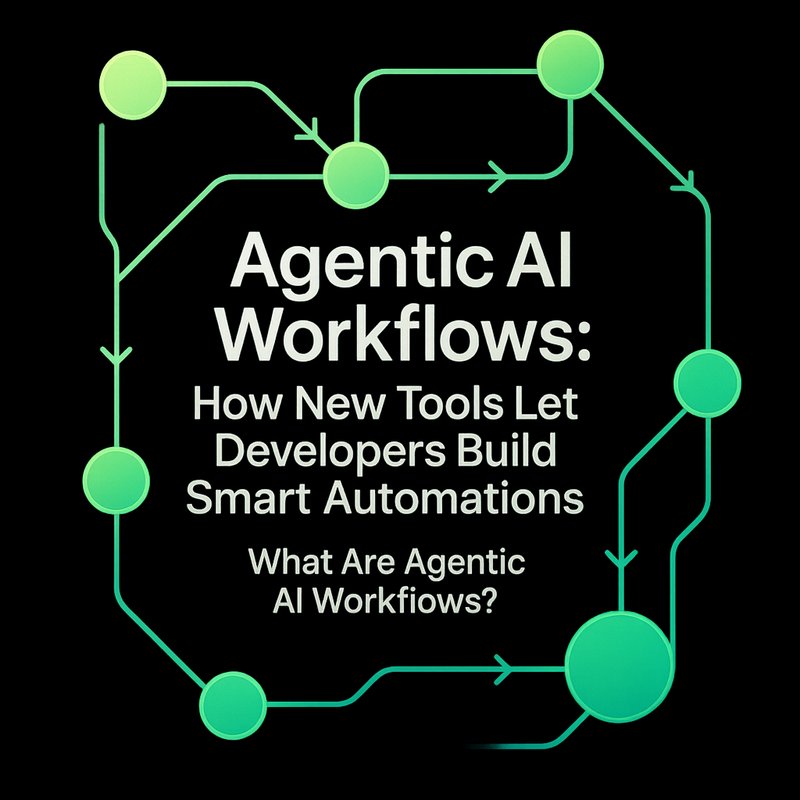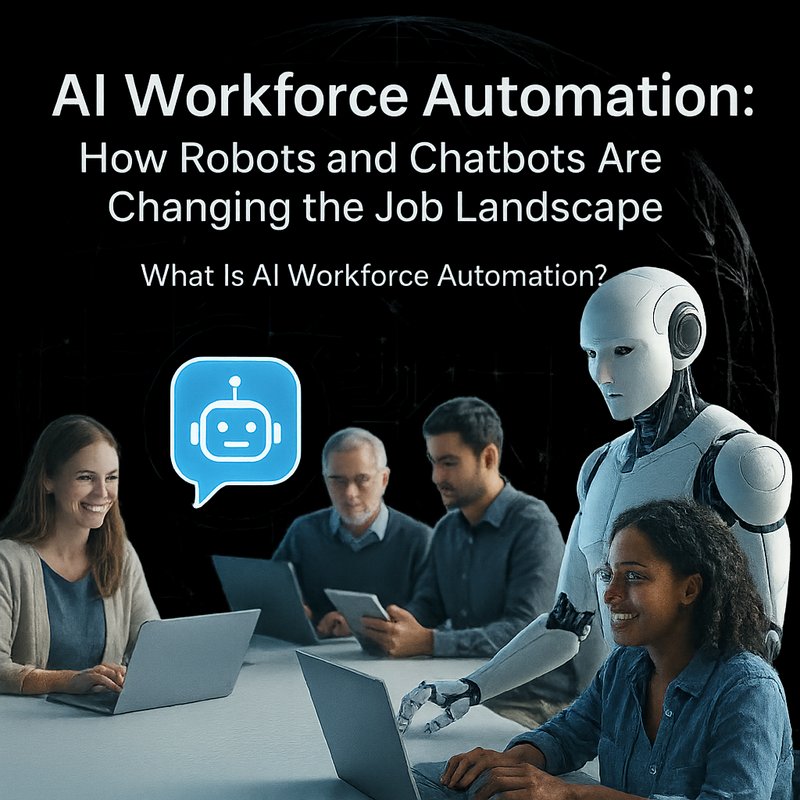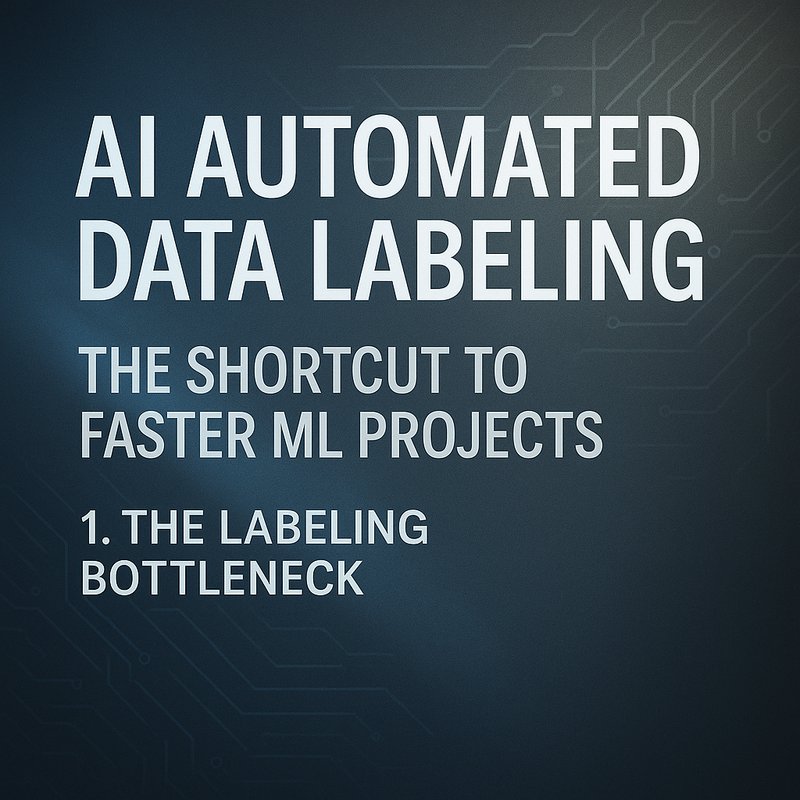Agentic AI workflows let developers create intelligent, self‑directed systems that can think, plan, and act across different tools. In 2025, the trend is shifting from single‑purpose chatbots to multi‑agent orchestration. This article explains why agentic AI workflows matter, how they work, and how you can start using them today.
Read on to discover the latest tools, best practices, and real‑world examples that showcase the power of agentic AI workflows.
What Are Agentic AI Workflows?
Agentic AI workflows are collections of AI agents that collaborate to complete complex tasks. Each agent has a specific role—like searching the web, writing code, or analyzing a spreadsheet—and the workflow routes requests between them automatically. Think of a team of specialists who work together without a manager; the system decides which agent to call next based on the user’s goal.
Key points to remember:
- Modular agents: One agent can be replaced or upgraded without breaking the whole system.
- Dynamic routing: The workflow adapts on the fly, choosing the best agent for the current step.
- Reasoning and memory: Agents keep a short history of the conversation to maintain context and avoid repeating information.
Agentic AI workflows are the foundation of several popular platforms today, such as SEAL, DeepResearch, and Zapier AI Agents. They’re also central to tools like Neura ACE, which automates content creation by chaining together multiple AI services.
Why Are Agentic AI Workflows Gaining Momentum?
-
Higher Efficiency
Traditional monolithic models handle everything in one pass, often wasting compute on unrelated steps. With agentic workflows, only the needed agent runs for each sub‑task, saving time and resources. -
Greater Flexibility
Developers can plug in new models or APIs as soon as they’re available. If a new image generation model is released, you can add it to your workflow without rewriting existing code. -
Better Reliability
If one agent fails, the system can fallback to a backup. This redundancy is crucial for production workflows that can’t afford downtime. -
Easier Debugging
Since each step is isolated, it’s simpler to pinpoint where errors arise and fix them quickly.
Because of these advantages, many companies are investing in agentic AI frameworks. For instance, Zapier announced AI Agents that handle scheduling, email drafting, and project management, all through a single user prompt. Microsoft Copilot and Google Gemini also embed agentic principles to provide smarter assistance across Office and Workspace.
Core Components of an Agentic AI Workflow
| Component | Purpose | Example |
|---|---|---|
| Agent | Performs a specific function (search, code, image) | A web‑scraping agent that pulls the latest news |
| Router | Decides which agent to call next | A logic that sends “write a summary” to a language model |
| Memory | Stores recent context | Keeps the last 5 steps of conversation |
| Reasoner | Thinks step‑by‑step, generating intermediate plans | Generates a plan to fix a coding error |
These parts can be assembled in many ways. Some platforms offer a visual flow editor, while others use code‑first definitions. The choice depends on your team’s skill set and the complexity of the workflow.
Building an Agentic AI Workflow: A Step‑by‑Step Guide
Below is a beginner‑friendly example that creates a simple workflow using Neura ACE. We’ll build a system that:
- Reads an incoming email.
- Summarizes the email content.
- Generates a reply draft.
- Sends the reply via a mail service.
Step 1: Set Up Your Environment
# Install the Neura ACE CLI
npm install -g neura-ace-cli
# Create a new project
neura create my-email-bot
cd my-email-bot
Step 2: Define Agents
{
"agents": [
{
"name": "EmailParser",
"type": "text",
"model": "openai/gpt-4o-mini"
},
{
"name": "Summarizer",
"type": "text",
"model": "openai/gpt-4o-mini"
},
{
"name": "ReplyDraft",
"type": "text",
"model": "openai/gpt-4o-mini"
},
{
"name": "Mailer",
"type": "action",
"service": "smtp"
}
]
}
Step 3: Create the Routing Logic
routes:
- when: "new_email"
actions:
- EmailParser
- Summarizer
- ReplyDraft
- Mailer
Step 4: Add Memory and Reasoning
Neura ACE automatically stores the last 10 steps. You can also add a custom reasoner:

{
"reasoner": {
"prompt": "You are a helpful assistant. Plan how to reply to this email based on the summary."
}
}
Step 5: Deploy and Test
neura deploy
# Send a test email to the configured inbox
If everything works, the bot will parse the incoming email, summarize it, draft a reply, and send it out—all without manual intervention.
Real‑World Use Cases
| Industry | Application | Benefit |
|---|---|---|
| Customer Support | Automated FAQ and ticket routing | Faster response times, lower workload for agents |
| Marketing | Content calendar creation and social‑media posts | Consistent brand voice, automated scheduling |
| Software Development | Bug triage and code review | Rapid identification of issues, automated suggestions |
| Finance | Report generation and compliance checks | Accurate, timely insights with minimal manual review |
Case Study: FineryMarkets.com
FineryMarkets.com integrated an agentic AI workflow to automate their financial reporting pipeline. By chaining together a data extraction agent, a summarization agent, and a PDF generation agent, they cut report production time from 8 hours to 30 minutes. The system also auto‑tags compliance issues, reducing manual audits. More details can be found in our case study.
Popular Platforms Supporting Agentic AI Workflows
| Platform | Highlight | How to Get Started |
|---|---|---|
| SEAL | Agentic framework for research and product demos | Sign up at the SEAL portal and explore templates |
| DeepResearch | Automates literature review and data extraction | Use the DeepResearch SDK to connect to OpenAI and other LLMs |
| Zapier AI Agents | Turn Zapier automations into intelligent agents | Create a Zap with the “AI” trigger and select your LLM |
| Microsoft Copilot | Embedded in Office 365 for real‑time assistance | Activate Copilot in Word or Excel to use agentic prompts |
| Google Gemini Pro 1.5 | Supports up to 1 million‑token context windows | Integrate via the Gemini API and build custom flows |
| Neura ACE | Full‑stack platform for content automation | Follow the tutorial above and connect to your tools |
All of these platforms use the same core idea: let the AI decide which agent to activate next based on the goal.
Best Practices for Designing Agentic AI Workflows
-
Start Small
Build a single‑purpose workflow first. Once it’s stable, add more agents gradually. -
Keep Agents Focused
Each agent should have a clear, narrow responsibility. Avoid “mega agents” that try to do everything. -
Use Context Wisely
Limit the memory size to keep latency low. Store only the most relevant information. -
Plan for Failure
Implement fallback agents or retry logic. If an image‑generation agent fails, the workflow can switch to a text‑based description. -
Test Extensively
Simulate different user inputs and edge cases. Agentic workflows are only as good as the test data. -
Monitor and Iterate
Use logs and metrics to see where bottlenecks occur. Update your routing rules as new models become available.
Future Trends in Agentic AI Workflows
-
Self‑Training Agents
Models like Absolute Zero Reasoner (AZR) and WebThinker can generate their own training data, making workflows more adaptable. -
Zero‑Shot Reasoning
New LLMs (e.g., Gemma 2, Llama 3.3) are increasingly good at reasoning without fine‑tuning, reducing the need for custom agents. -
Integrated Toolkits
Platforms like Neura Router allow you to connect over 500 models with a single API endpoint, simplifying agent selection. -
Regulatory Compliance
Open‑source tools like truelens® will become standard in workflows that process sensitive documents, ensuring data stays compliant. -
Edge Deployment
Lightweight LLMs (e.g., StableLM‑7B) will enable agentic workflows on mobile and IoT devices, opening new application spaces.
How Neura AI Fits Into the Landscape
Neura AI’s Neura ACE is built around agentic AI workflows. It offers a visual editor, pre‑built agent templates, and tight integration with major APIs. For example:
- Email Automation: Combine Neura ACE’s email agents with your existing CRM.
- Content Generation: Use the Content Executive to create SEO‑friendly articles automatically.
- Knowledge Management: The Neura Router can pull data from your internal knowledge base and present it to users in natural language.
If you’re interested, check out our product overview at Neura AI Products.
Common Questions About Agentic AI Workflows
| Question | Answer |
|---|---|
| Do I need deep AI knowledge to use these workflows? | No. Most platforms provide visual editors and templates. |
| Can I mix models from different vendors? | Absolutely. The router handles the routing logic and can call any LLM, whether from OpenAI, Meta, or Google. |
| What about privacy? | Agentic workflows can run locally or in private cloud deployments. Platforms like Neura Router support on‑prem hosting. |
| How do I ensure my workflow scales? | Use serverless functions or container orchestration. Many frameworks automatically scale based on. |
Final Thoughts
Agentic AI workflows are reshaping how we build intelligent applications. By breaking complex tasks into smaller, focused agents and letting a router orchestrate them, developers can create robust, adaptable systems that learn and evolve. Whether you’re automating customer support, generating marketing content, or building a research assistant, agentic AI workflows give you the flexibility to add new capabilities without rewriting the whole stack.
Try building your own agentic workflow today—start with a simple task, then expand it as you learn more. The future of AI isn’t just smarter models; it’s smarter orchestration.



